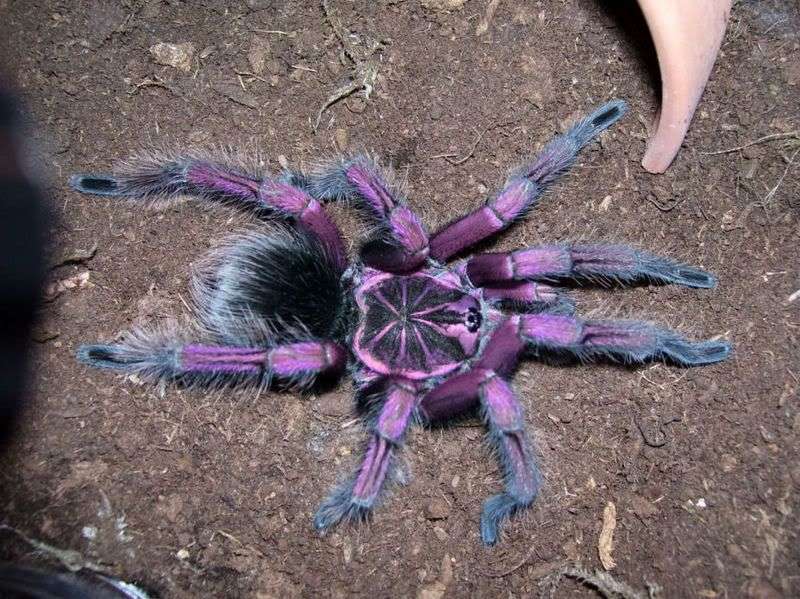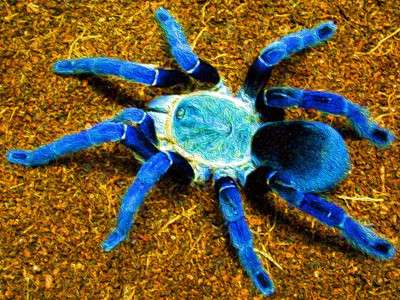
The body and legs of purple tarantulas are covered in purple hairs. Setae are the name for their bristle-like hairs. They are an Ecuadorian medium-sized docile tarantula. They are occasionally maintained as pets in the exotic pet trade due to their vibrant coloring. These spiders are arboreal, meaning they live in trees and build their nests inside the crooks of branches and hollowed-out tree trunks.
Physical Appearance
- The purple tarantula is one of the many hues that tarantulas come in, and it is not disappointing. They have an amazing purple iridescence.
- All of the abdomens are black, with a purple head (carapace) and legs coated in purple hair. They stand out due to the iridescent shimmer that their hairs or bristles emit.
- The largest females can grow to be 2 inches long with a leg span of 5 inches. They are also stockier than the males.
- They have two body segments: an abdomen and a head (or carapace). Eight eyes are located on the top of the head, with two being larger than the others.
- They have two appendages at the front of their bodies that resemble arms in addition to eight jointed legs.
- Pedipalps are the name of these appendages, which are employed for catching and holding prey. During mating, males use their uniquely designed pedipalps. Spinnerets cover the tarantulas’ backs.

Habitat
The Purple tarantula lives in hollowed-out tree trunks and in the bends of tree limbs. It is an arboreal species. They have great climbing skills and can ascend a tree trunk swiftly.
The steamy and muggy Amazon rainforests are home to the purple tarantula, which is a native of Ecuador. These spiders love a hot, humid atmosphere in captivity as well. The ideal setup is a sizable enclosure with a variety of plants and vegetation.
Diet
Snakes, lizards, birds, and larger spiders are a few of the creatures that inhabit Ecuador’s rainforests and consume tarantulas. Large wasps called tarantula hawks also eat tarantulas by paralyzing and burying them alive.
Reproduction
Males leave their nests to look for females when they achieve sexual maturity, which typically occurs between the ages of 3 and 4 years. Females can be picky, and if a man approaches her, she might try to fight him. The male will be able to mate with the female if she is open, and the female will then retire to her nest. Males can live for a short while after mating, with an average lifespan of three to four years.
The females lay between 100 and 120 eggs, which are then encased in a ball of silken web. She’ll keep an eye on them until they can hatch. The spiderlings will hatch after 6–8 weeks and eventually leave on their own to build their own nests.
Lifespan
The purple tarantula’s life expectancy is substantially greater in females than in males, with some lasting as long as 10 to 12 years. Pet lovers typically want to get a female in order to enjoy their pet for a longer period of time.
Requirements to keep as Pet
There should be enough materials to climb on and attach webbing to in the cage, which should be taller than it is broad. A cork bark hide should be accessible, the floor should be lined with two inches of substrate, and you should have a bowl of fresh water nearby.
Temperature/Humidity: 78–82°F with a relative humidity of 65–75%.
Diet: A good eater who can consume one dubia roach or numerous adult crickets each week.
Table





